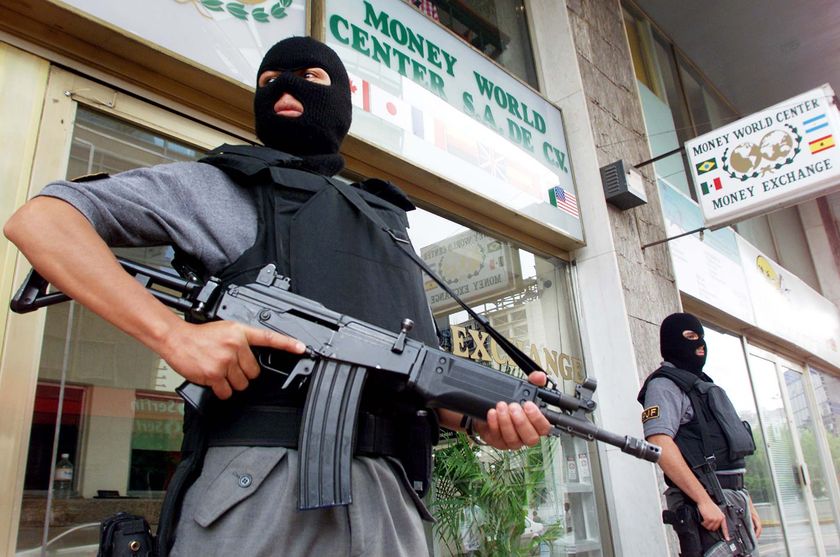
2,000 Drugs Authorities May Never Be Able to Outlaw As If You Didnt Have Enough To Worry About
Written by Logan Mazzettia, Posted on , in Section Stress Relief
The War On Drugs is over? Who won?
This article is not a prediction, it's a warning. The war on drugs has claimed many casualties over the years. It was a battle that was always going to be hard to win. But it looks like the war is over. It didn't end with a bang, but with a whimper. And in the end, it wasn't the dealers, the pushers, the users or the gangbangers who won. Nor the DEA, or the police or other authorities, who lost. It was the Chinese businessmen, the eCommerce developers, local head shops and one-step-ahead chemists that won the war in one fell swoop with a sneak attack while no one was even looking.
You may or may not have recently heard about substances that go by the names Spice or Bath Salts or Plant Food. These are actually codewords that describe a whole family of products. There is a booming business in the invention of designer drugs meant to skirt international drug laws. Chemists come up with novel molecular structures to produce synthetic cathinones, cannabinoids and other types of drugs that are chemically different in significant ways from previously outlawed substances. In order to explain this in further detail it would be necessary to delve into some boring, deep chemistry, but basically what all this means is that chemists are able to come up with totally legal alternatives to cocaine, amphetamines, marijuana and other drugs.
Many parents fail to understand how deadly serious some of these legal drugs can be. Do not let your young adult son or daughter fool you. This stuff is no joke. If you know any young men or women who are experimenting with any of these dangerous chemicals, it may be necessary to seek professional help.
The Chinese Connection
China is the main supplier of the chemicals that go into making many of these drugs. Chinese manufacturers are not barred in any official capacity from contributing to this illicit substances market. While it is tough to find legitimate numbers, some experts estimate the size of the legal high market at around $500 billion per year. To put this into perspective, the global market for illicit drugs is around $300 billion per year. With much of this money flowing up to Chinese tax collectors, it is unlikely that the Chinese will be willing to play ball when it comes time to write any international treaties to ban the manufacture of synthetic drugs.
Complicating matters is the fact that these drugs often come labeled in packages which read 'not intended for human consumption'. This means that the onus is on drug enforcement officials to determine that the manufacturer actually did intend for buyers to smoke, snort or otherwise ingest the substances. This is the reason that the drugs are given innocuous product names, such as plant food or bath salts, despite having no functional utility for either of those uses.
Alexander Shulgin, a prominent evangelist of legal highs and the source of many headaches for drug enforcement agencies around the world, has said that he believes there will be 2,000 legal highs available on the open market by the year 2050. Currently there are around 251 known designer drugs. In 2009 there were 166. There are 234 drugs illegal drugs which are banned by most countries. It's entirely within the realm of possibility that the number of known legal designer drugs is vastly lower than the actual number. There really is no way of telling. The world's drug labs do not have the manpower or the financial resources to keep up with the fast-paced developments emerging from the legal high 'gray market'.
OK... Well... What Can We Do?
In many cases, these drugs are even more dangerous than the drugs that they are meant to substitute for. Again, it is difficult to get real numbers because authorities often don't know what to look for. It's assumed that 11,100 emergency visits in 2010 were the result of the misuse of synthetic marijuana. Their popularity has increased since then. These drugs are popular with student athletes and criminals seeking to avoid positive drug tests from probation officers, as well as many other teens and other users.
Do we discourage drug use merely because it is illegal? No, we discourage drug use because there are personal problems and societal dilemmas that have arisen because of drug use. Legal highs are just as likely to contribute to both problems, so why should we treat them any differently?
I have seen teens who are under the influence of some of these drugs first hand. I can attest to the fact that they seem to be under the effects of a powerful high that in many ways seems scarier than even the illegal drugs. A young person on Spice or Bath Salts appears disjointed, zombie-like and as if they are in another dimension. Are those words that you would feel comfortable seeing applied to your teen son or daughter?
So, we must treat legal highs the same way that we do other drugs. We look for signs of a problem. We try to counsel our teens the best we can against starting with drugs in the first place. When we see a problem, we seek to end it, through treatment if necessary. We help our teen children understand the negative outcomes that await drug users. We help them to develop values that prize sobriety and caution.
There may come a day in the future when illegal drugs fade away because their legal counterparts present an appealing alternative without all the baggage that comes with criminal activity. When that day comes, we have to understand that the public health crisis represented by drugs does not disappear just because of this or that legal status.
